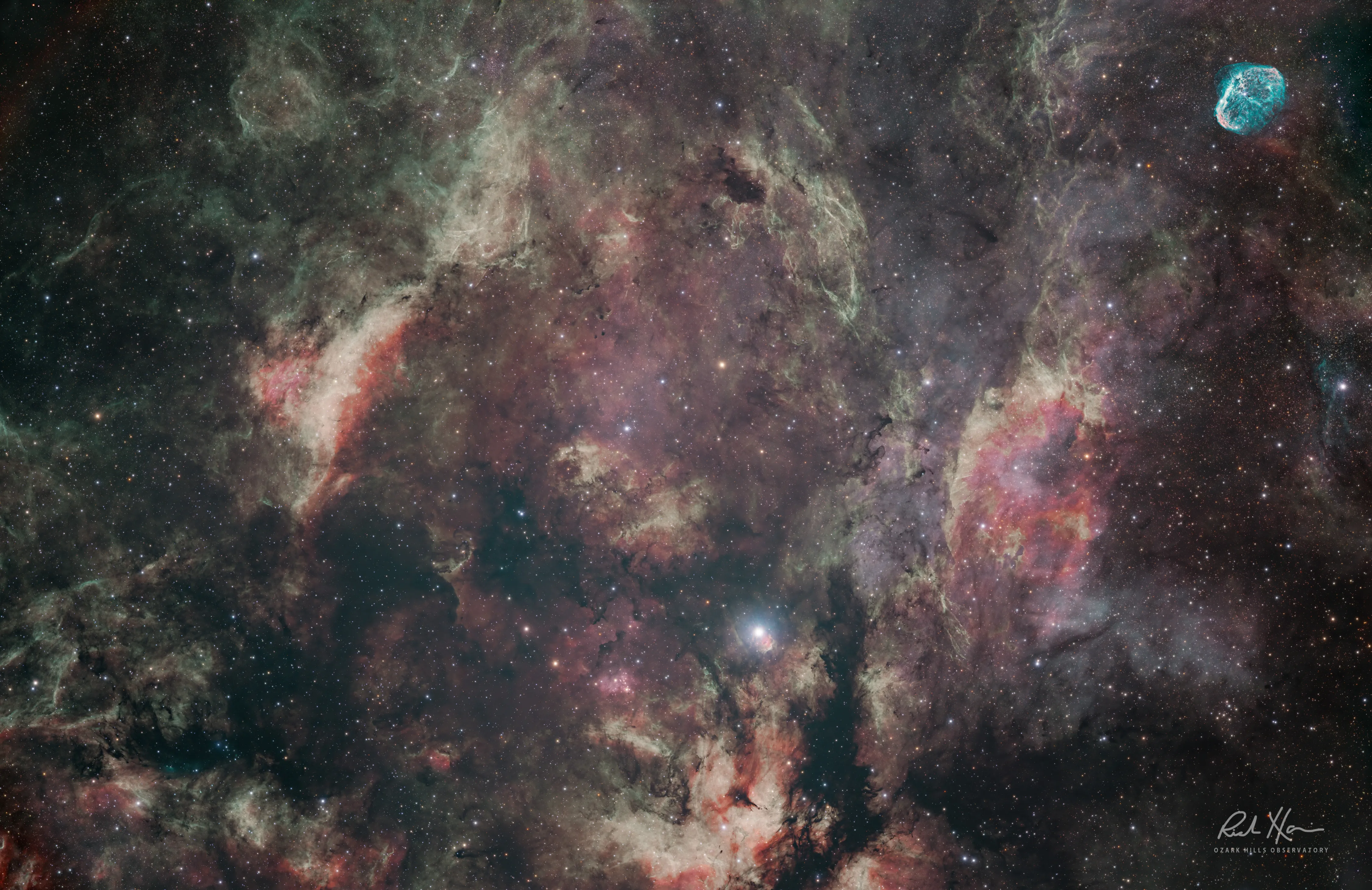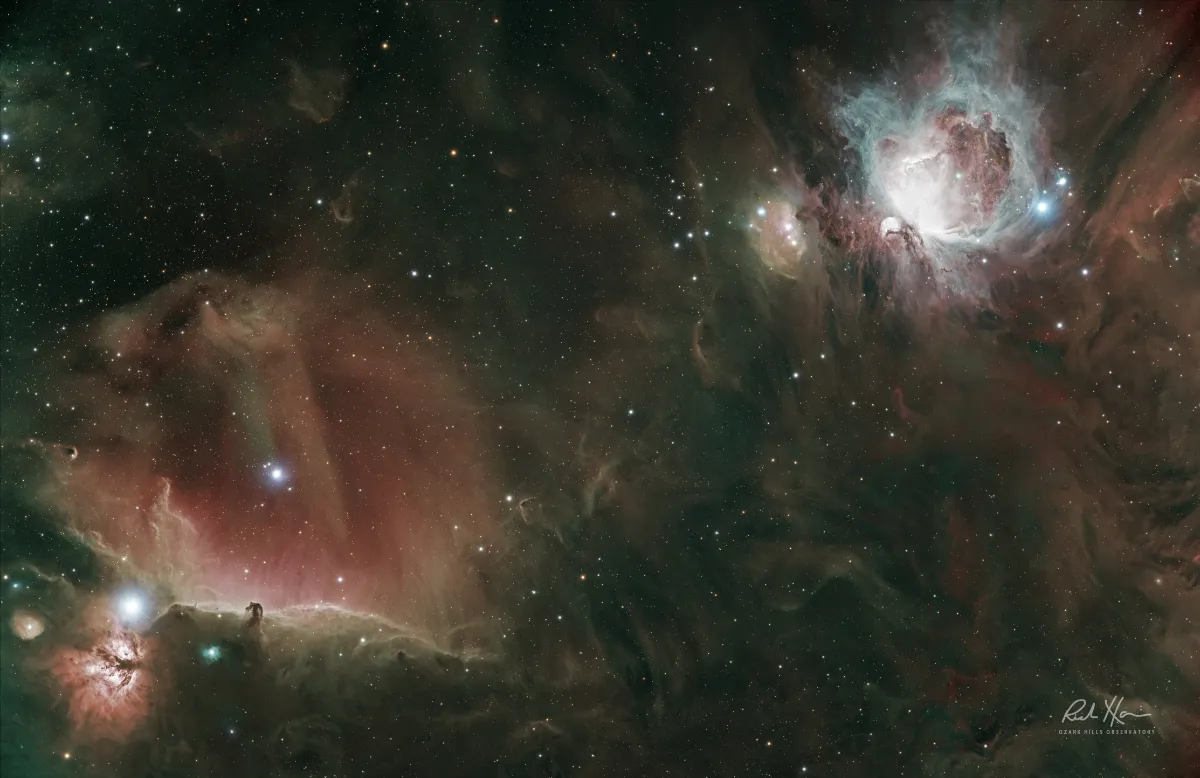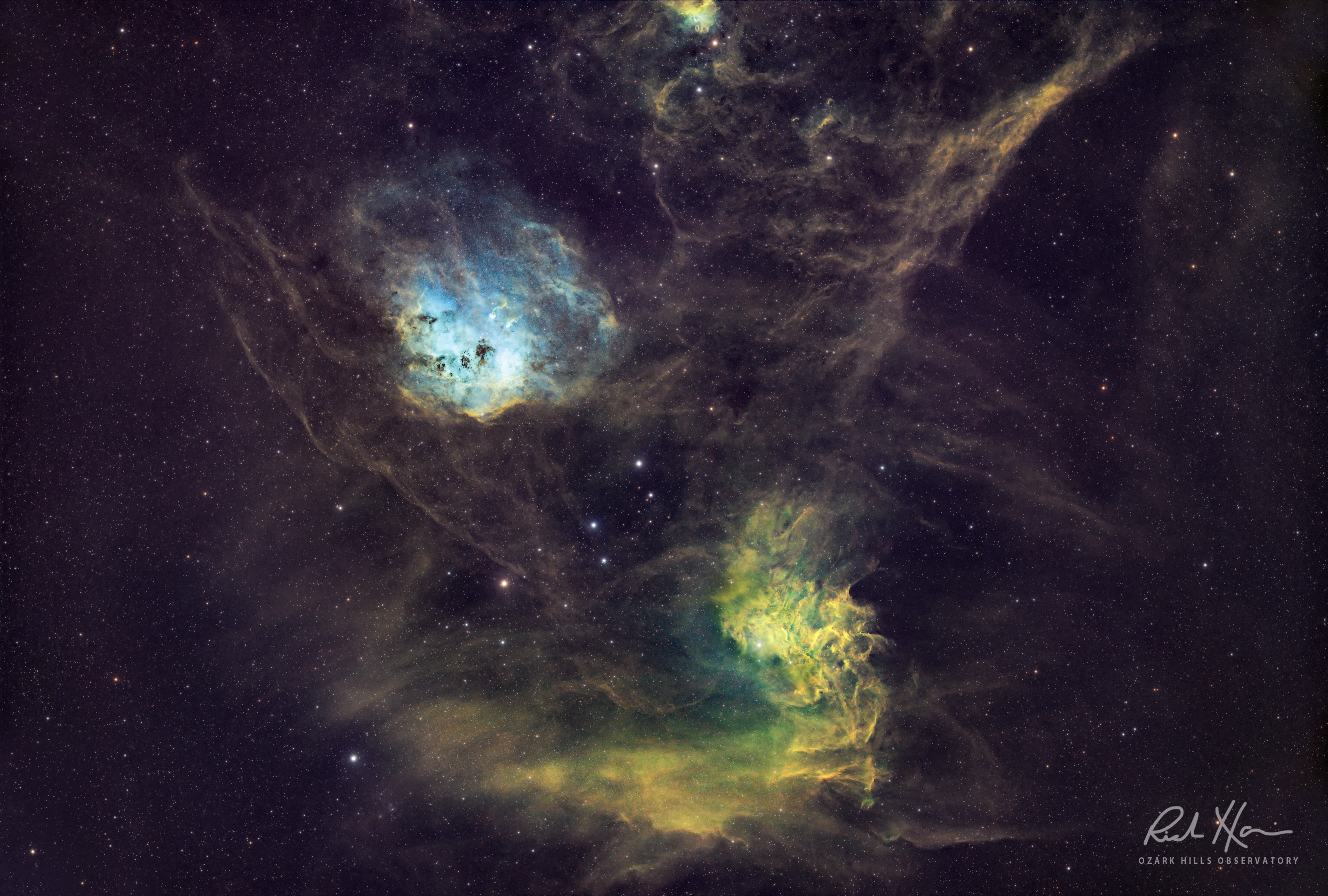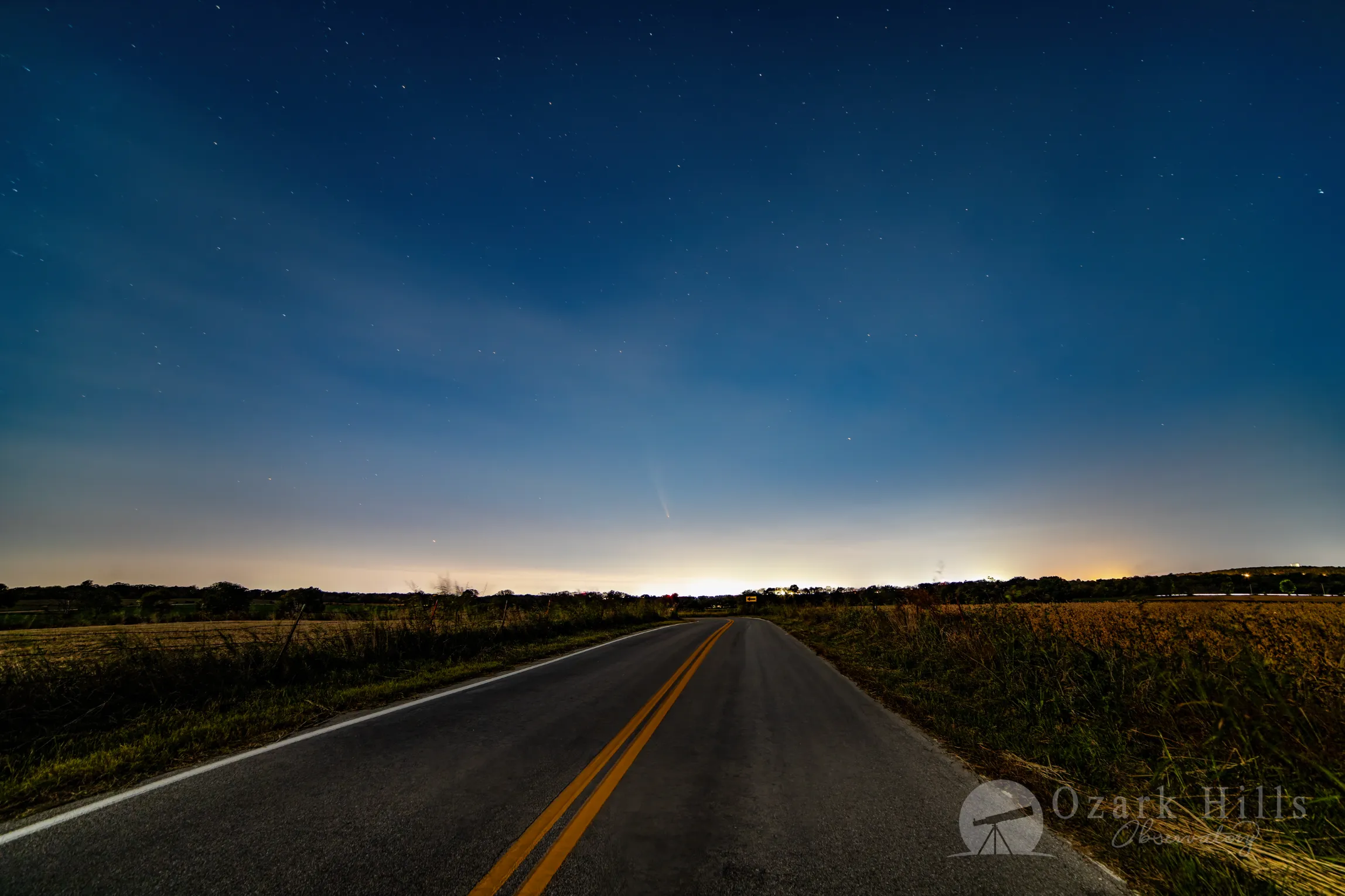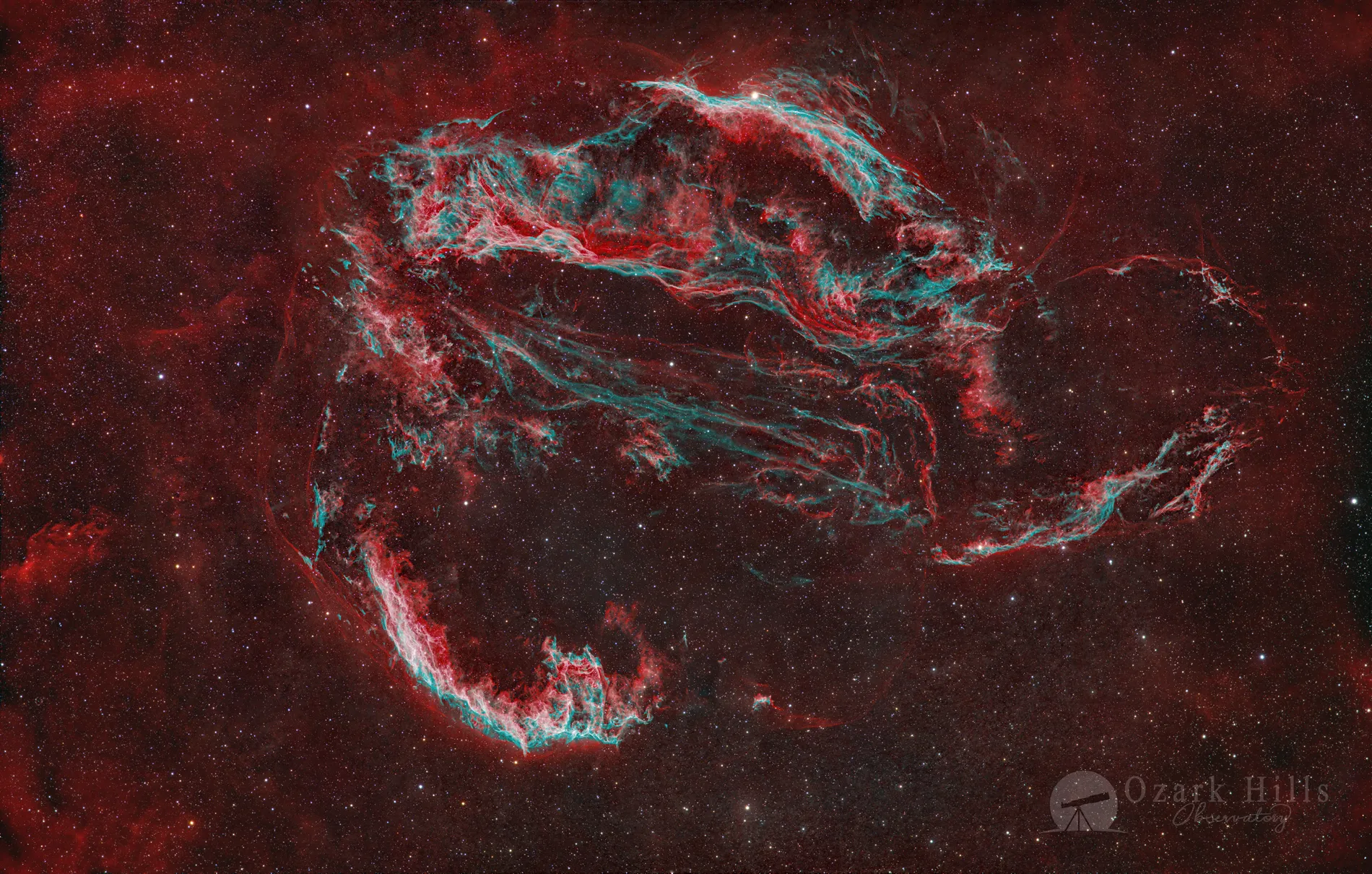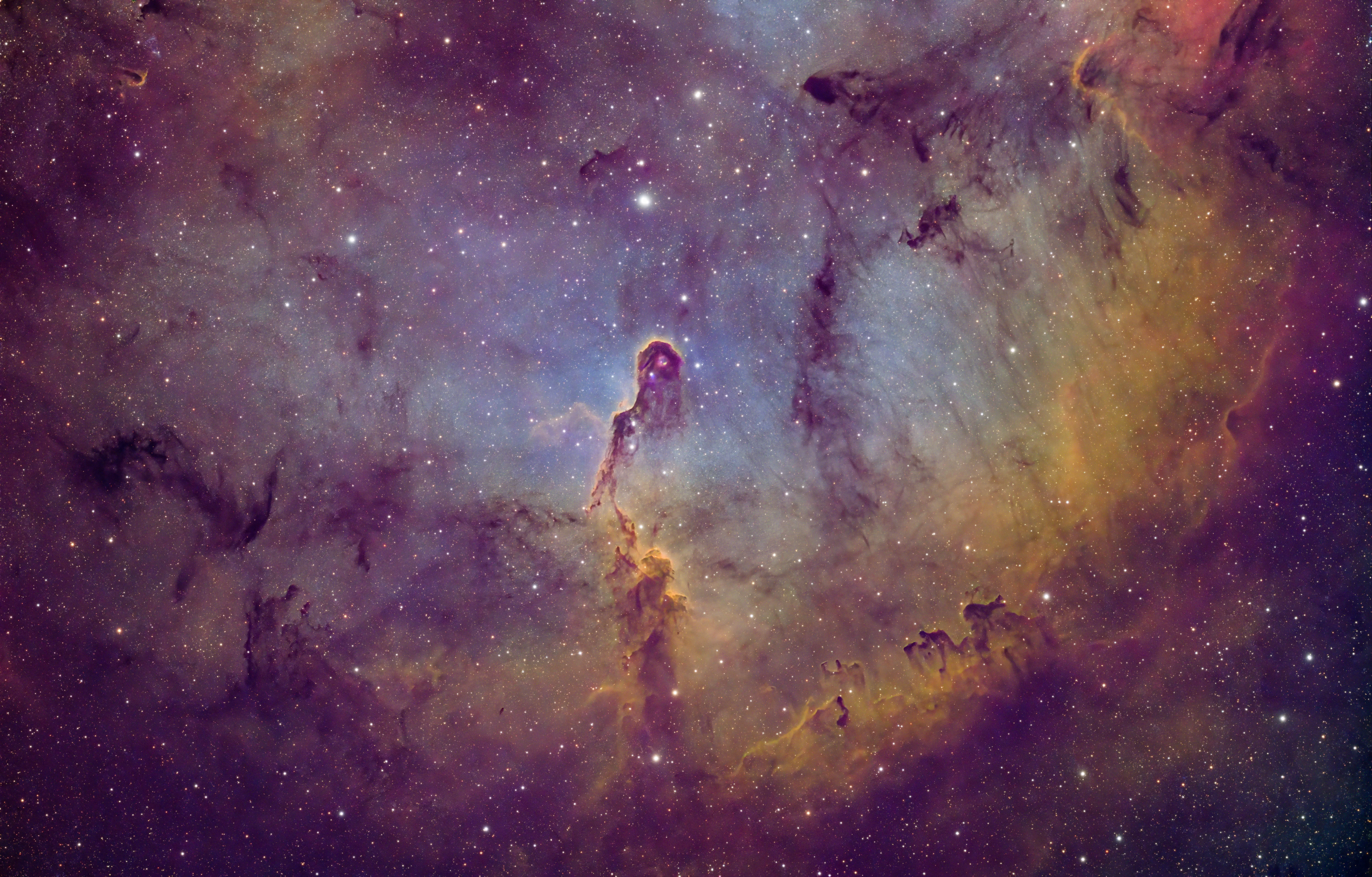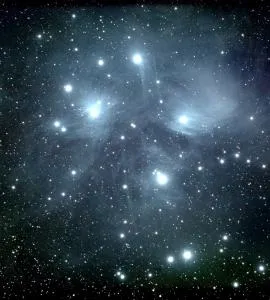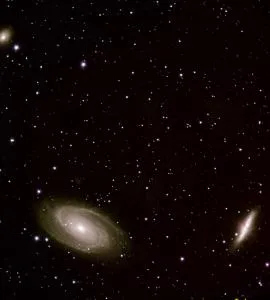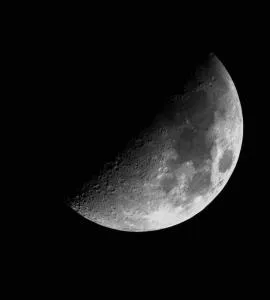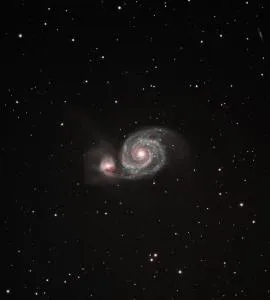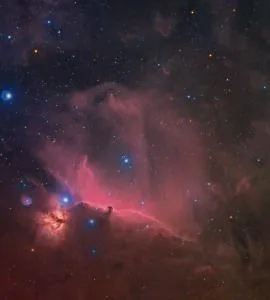Astrophotography of a Wolf Rayet star RCW 58 using a 24 inch telescope
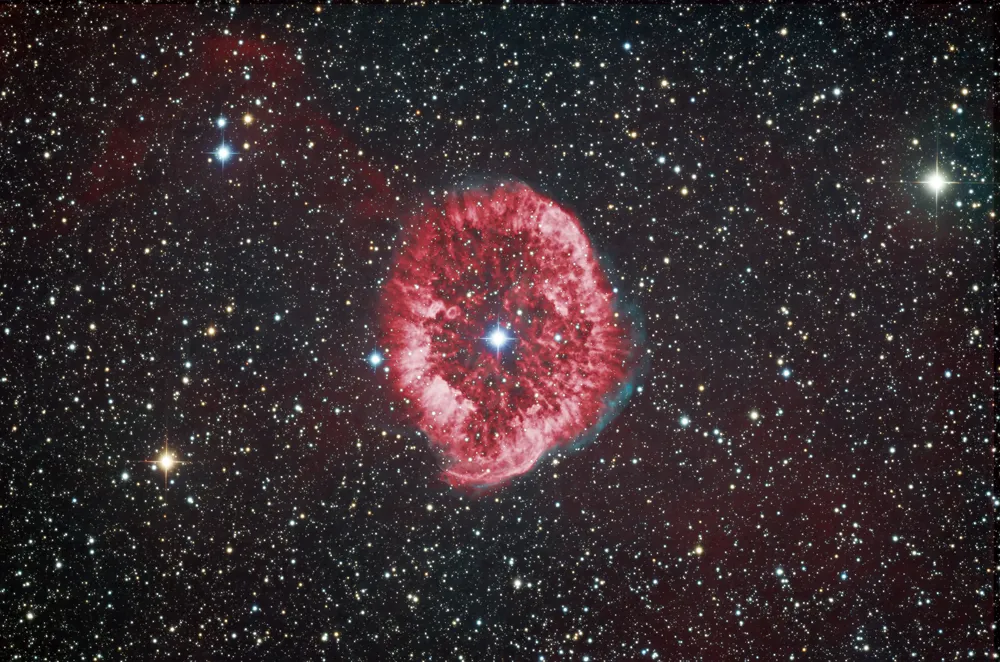
The cosmic beauty of RCW 58, a stunning star captured in our high-resolution astrophotography. This celestial image showcases the intricate details of the star's surrounding nebulosity, revealing the dynamic processes within this distant corner of the universe. Perfect for astronomy enthusiasts and space photography collectors.
The RCW Catalogue, authored by Rodgers, Campbell, and Whiteoak, is a comprehensive list of Hα-emission areas in the southern part of the Milky Way galaxy, initially detailed in a 1960 publication by Rodgers and others. This catalogue encompasses a total of 182 celestial objects and incorporates numerous entities that were previously listed in the earlier Gum catalogue, which itself features 84 items.
It's where I found my next astrophoto subect, RCW 58.
RCW 58 is a classic example of an E-type nebula, known as a Wolf-Rayet Bubble, created by material ejected from WR 40, the central star depicted in the photography above. In three dimensions, these bubbles are spherical, but when observed in two dimensions, they give the illusion of rings, as captured in the image. This type of nebula represents the stellar material that has been expelled into a bubble shaped by stellar winds. There are a number of other known Wolf-Rayet ring nebulae with similar characteristics, such as MI-67, RCW104, RCW78, NGC3199, and NGC6888.
Observations of H-alpha and OIII emissions from eight of the most distinctly outlined Wolf-Rayet ring nebulae in our galaxy indicate that often the outermost boundary of the OIII emission is ahead of the H alpha emission. This pattern suggests that, when these offsets occur, they are likely caused by the shock wave generated as the Wolf-Rayet bubble expands into the surrounding stellar envelope.
RCW 58 is particularly noted for its ring-like appearance in two-dimensional images, which is characteristic of such bubbles in space when viewed from our perspective on Earth. The structure and emissions from nebulae like RCW 58 provide astronomers with valuable information about the life cycle of stars, the dynamics of nebulae, and the conditions of the interstellar medium.
RCW 58 details
How far away is RCW 58?
The distance to RCW 58 and its associated Wolf-Rayet star WR 40 is not precisely determined, but estimates place it at around 13,000 light-years away from Earth. It is important to note that distances to astronomical objects, especially those within our own Milky Way galaxy, can be challenging to measure and may be updated as new methods and more precise data become available. The figure of 13,000 light-years should be taken as an approximate value based on the best available data up to my last update in April 2023.
Size: How big is RCW 58
RCW 58 is about 100X the size of our sun.
To conceptualize something that is 100 times bigger than another, let's use an everyday object as a reference point — for example, a common smartphone, which is roughly 15 centimeters (or about 6 inches) in length.
If we scale that up by 100 times, the object in question would be 1,500 centimeters, or 15 meters (which is about 50 feet) in length. That's about the size of a large yacht or half the length of a basketball court. In other words, if your smartphone suddenly grew to be 100 times larger, it would be as long as a blue whale, the largest animal on Earth!
In astronomical terms, if we consider a star that is 100 times bigger than another, it's the difference between a modest-sized star like our Sun and a hypergiant star, which can be among the largest stars in the universe in terms of volume. For instance, the Sun's diameter is about 1.4 million kilometers, so a star 100 times larger in diameter would be 140 million kilometers across — that's almost the distance from the Sun to the orbit of Mars!
Temperature
The exact temperature of the entire RCW 58 nebula can vary significantly because it consists of gas and dust heated by the central star, WR 40. The temperature within a nebula like RCW 58 is not uniform and can range from relatively cool regions with temperatures of a few tens of degrees above absolute zero to very hot regions where the gas is heated by the star's radiation to several thousand, or even tens of thousands, of Kelvin.
Wolf-Rayet stars themselves, such as WR 40, are some of the hottest stars known, with surface temperatures ranging from 25,000 to around 50,000 Kelvin or more. The surrounding nebula, being ionized by the intense ultraviolet radiation from the star, can have temperatures of around 10,000 Kelvin in the regions where hydrogen is ionized.
However, without specific observational data to provide detailed temperature mapping of RCW 58, these figures can only serve as general estimates. For precise measurements, astronomers would use spectroscopy to analyze the light emitted by the nebula's gas and determine its temperature and composition.
So what am I looking at here?
Alright, imagine you're sittin' on the porch one evenin', and you see ol' Bessie, your most reliable firework, go off into the sky, but instead of just fadin' away, she leaves a big ol' sparkly trail that hangs around long after the boom. That's kinda like what astronomers see when they look up at RCW 58.
Now, RCW 58 ain't a firework, but it's a star that done blew up real good a long time ago, and what we're seein' now is the left-behind bits and pieces that are still glimmerin' and driftin' out in space. This star was more massive than our sun, and when it went kaboom, it threw off its outer layers into space, creatin' what them fancy space-watchers call a "nebula."
So, in simple talk, RCW 58 is like the ghostly shrapnel from a huge star that exploded, and it's still so hot and energized that it glows, kinda like the embers in a campfire that keep glowin' even after the flames are gone. Ain't that somethin'?
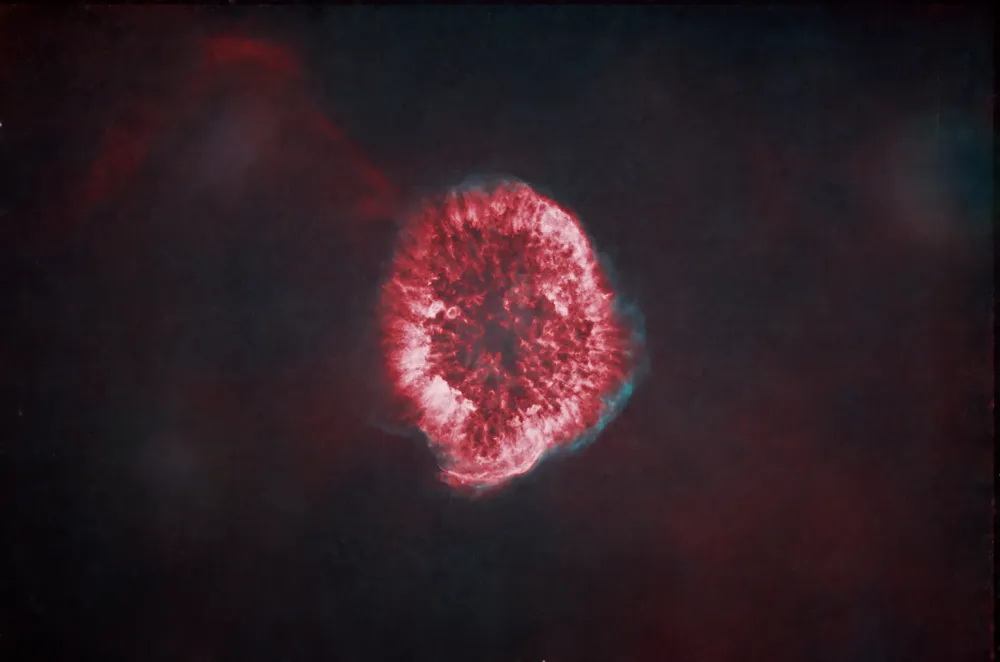
Many Deep Space Catalogs
There are numerous astronomical catalogs that have been compiled to categorize various deep-space objects such as stars, galaxies, nebulae, and other celestial bodies.
The subsequent Caldwell catalog encompassed certain entities also found in the RCW catalog. Additionally, there's a partial concurrence with the Sharpless Catalogue-2, which consists of 312 entities, mainly cataloging objects in the northern hemisphere. In contrast, the RCW and Gum catalogs predominantly document objects located in the southern hemisphere.
Deep Space Catalogs
1. Messier Catalog (M): Compiled by Charles Messier, it lists some of the most fascinating deep space objects visible from Earth, including galaxies, nebulae, and star clusters.
2. New General Catalogue (NGC): A more extensive catalog that includes all types of deep space objects.
3. Index Catalogue (IC): A supplement to the NGC, it includes fainter or newly discovered objects.
4. Caldwell Catalog (C): A list of 109 star clusters, nebulae, and galaxies for amateur astronomers to observe.
5. Herschel 400 Catalog: A list of 400 deep-sky objects selected from John Herschel's larger catalog that amateur astronomers often use.
6. Sharpless Catalog (Sh2): A catalog of emission nebulae.
7. Revised New General Catalogue (RNGC): An updated version of the NGC.
8. Uppsala General Catalogue of Galaxies (UGC): A catalog of galaxies beyond the local supercluster.
9. Morphological Catalogue of Galaxies (MCG): A catalog that lists galaxies and includes their morphological classification.
10. Principal Galaxies Catalogue (PGC): A comprehensive catalog of galaxies.
11. Catalogue of Galaxies and of Clusters of Galaxies (CGCG): A catalog of galaxies and galaxy clusters in the northern sky.
12. Atlas of Peculiar Galaxies (Arp): A catalog of peculiar galaxies produced by Halton Arp.
13. Virgo Cluster Catalog (VCC): A catalog of galaxies in the Virgo Cluster.
14. General Catalogue of Variable Stars (GCVS): A catalog of stars whose brightness changes over time.
15. Henry Draper Catalogue (HD): A star catalog with spectral classifications.
16. Sloan Digital Sky Survey (SDSS): A project that has created detailed maps of the universe.
17. Two Micron All Sky Survey (2MASS): An all-sky survey of the sky in infrared light.
18. Hubble Deep Field (HDF): Images from the Hubble Space Telescope revealing distant galaxies.
19. Chandra Deep Field South (CDFS): Deep field images from the Chandra X-ray Observatory.
20. Gaia Catalogue: An ambitious mission to chart a three-dimensional map of our Galaxy, the Milky Way.
These catalogs vary in their scope and the types of celestial objects they include. Each serves as a critical resource for both professional and amateur astronomers for observing and studying the cosmos.
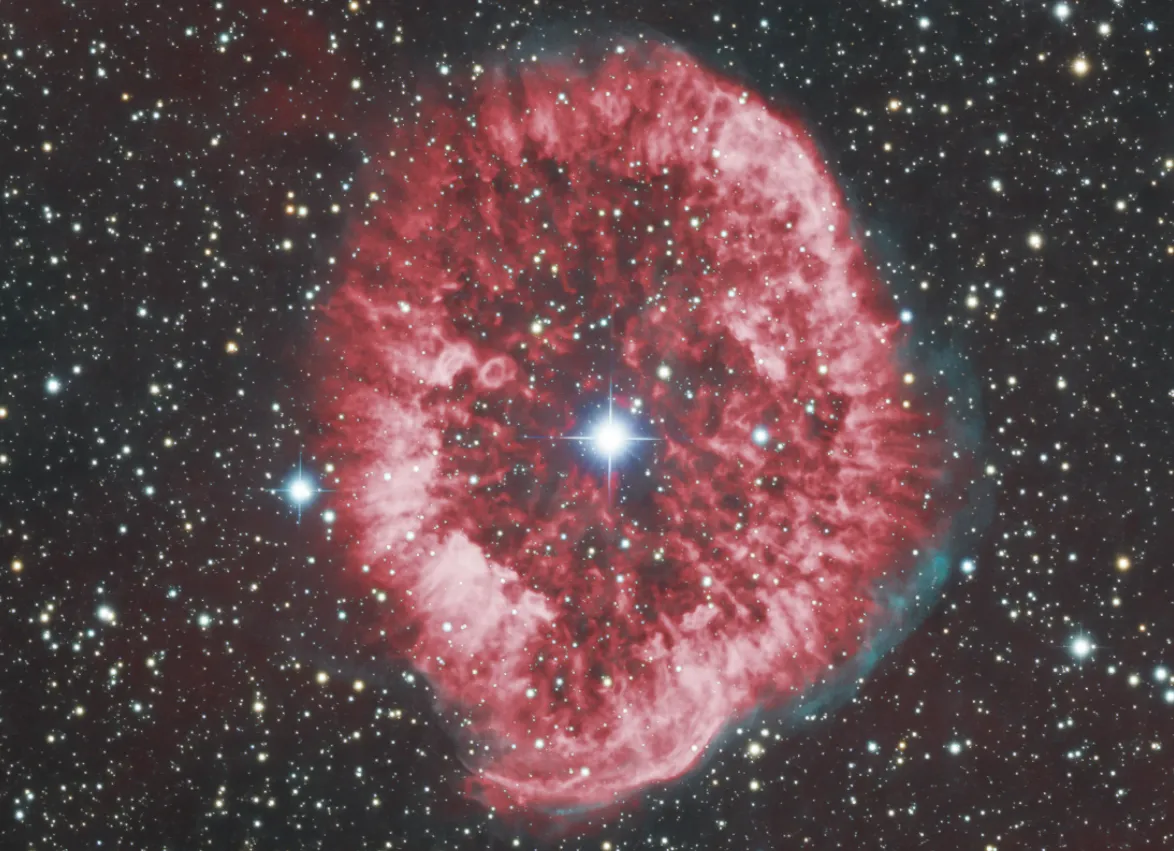
Astrophoto details of my RCW 58 shot
Telescope: PlaneWave 24" / remote
Mount: Planewave L600 direct drive mount
Camera: Moravian C3-61000 Pro, Temp= -10, Gain= -0
Guider: ZWO ASI 174mm mini as the guide camera, off-axis guided
Controller: NINA
Acquisition:
4.3 hours of OIII, 10 min subs
7 hours of Ha, 10 min subs
1.5 hours of R,G,Bl 180 sec subs
Darks/Flats/Bias: (15-25 each)
Total time 12 hours
Processing: Pixinsight, Photoshop
Location: Chile/Missouri
Bortle: 1
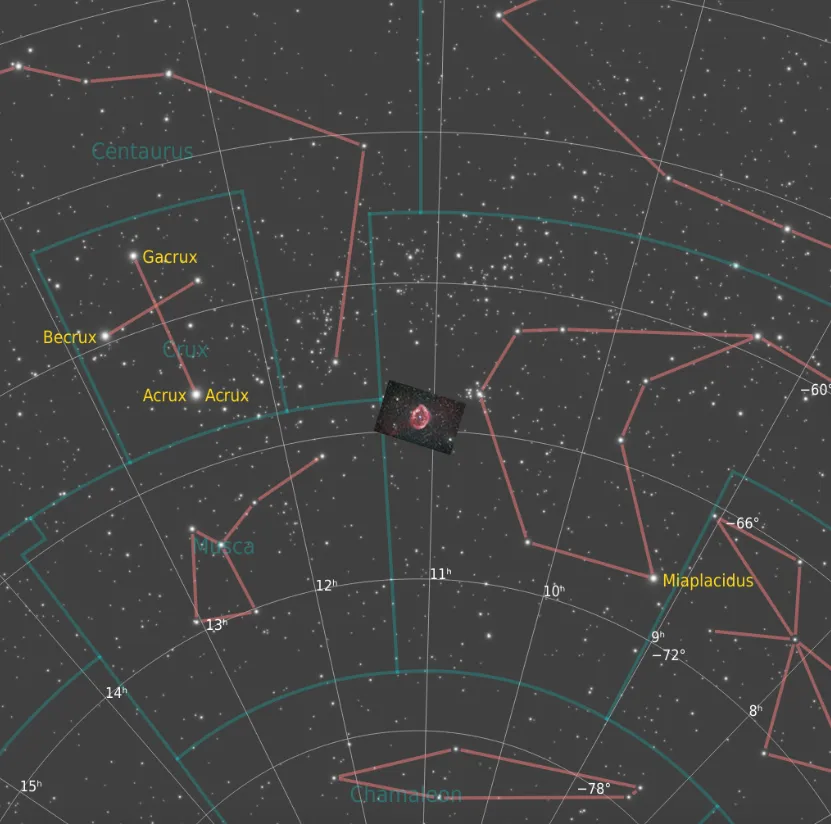
RCW 58 Bible takeaway
While no one can be absolutely certain what the Magi saw when following star to where Jesus was, the central Star WR 40 in the RCW 58 astrophoto reminds me of how bright stars can burn.
...and asked, “Where is the one who has been born king of the Jews? We saw his star when it rose and have come to worship him.”
The Magi Visit the Messiah
1 After Jesus was born in Bethlehem in Judea, during the time of King Herod, Magi from the east came to Jerusalem
2 and asked, “Where is the one who has been born king of the Jews? We saw his star when it rose and have come to worship him.”
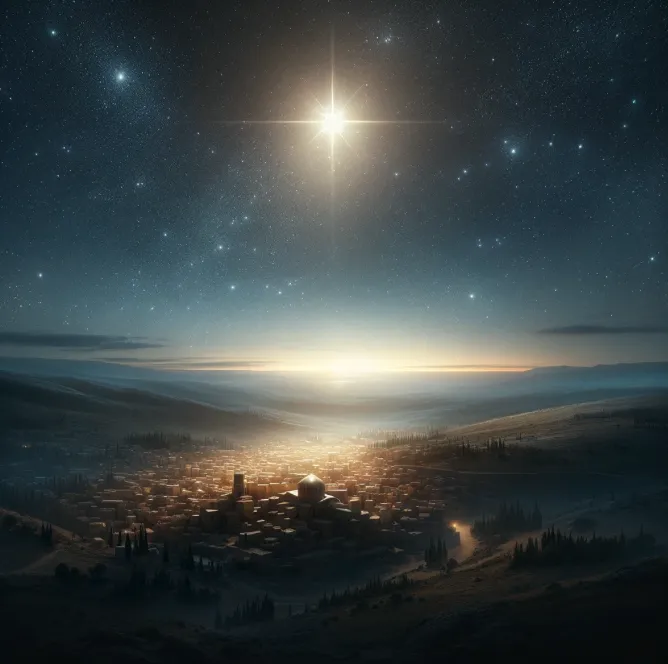
About the Author
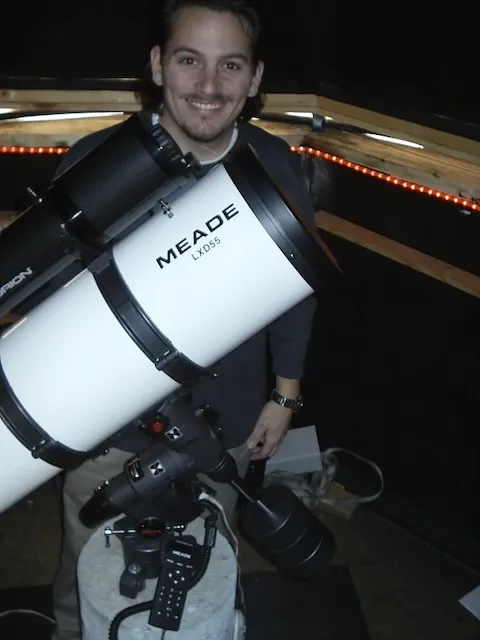
Meet Richard Harris, a passionate and dedicated astronomer who embarked on a cosmic journey at the age of 11 and has been reaching for the stars ever since. Born with an innate curiosity for the universe. Richard's fascination with astronomy ignited when he first gazed up at the night sky and felt an indescribable connection to the cosmos and creation. As a younger lad, Richard spent countless hours poring over astronomy books, studying constellations, and learning about the celestial wonders that grace our skies. In 2001, Richard invented the HyperTune telescope process, which has grown into the standard for German equatorial telescope mount tuning across the globe. He is also the founder of ScopeTrader, a global resource helping to grow the hobby of astronomy which started in 2002, and the CEO of Moonbeam software company, started in 2008. When he's not taking photos of our universe, you can find him with family, playing guitar, or traveling.
